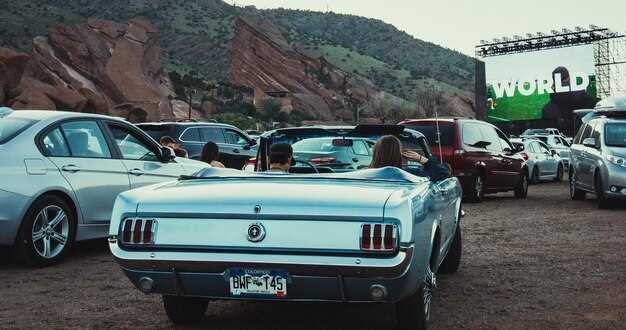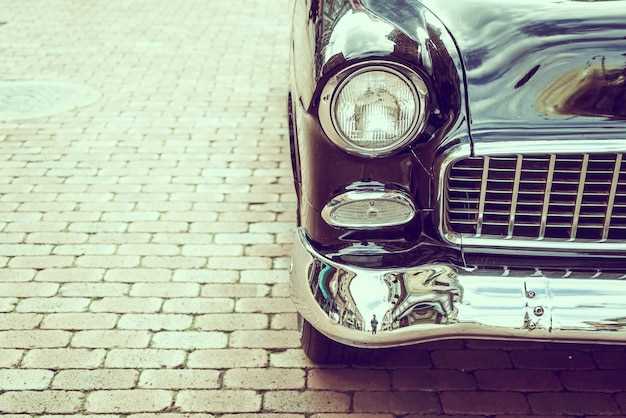
Muscle cars have become an iconic representation of American automotive culture, embodying a unique blend of raw power, performance, and style. Originating in the late 1940s and gaining popularity throughout the 1960s and 1970s, these vehicles not only influenced the automotive industry but also reflected the socio-economic landscape of their time. The history of muscle cars is marked by fierce competition among manufacturers striving to create the ultimate performance vehicle, a battle that would shape the future of American cars.
The term “muscle car” generally describes high-performance vehicles featuring powerful V8 engines, lightweight designs, and aggressive aesthetics. These cars emerged in an era when American society was characterized by post-war optimism, booming economies, and a vibrant youth culture eager for freedom and self-expression. Automakers seized upon this ethos, creating cars that were not only fast but also visually striking and attainable for the average driver, thereby solidifying their place in the hearts of enthusiasts and casual drivers alike.
As we delve into the historical overview of muscle cars in America, we will explore the key models, defining characteristics, and the cultural impact that these cars have had throughout different decades. From legendary vehicles like the Ford Mustang and Chevrolet Camaro to the more recent resurgence of interest in high-performance machines, the story of muscle cars is a fascinating journey through the evolution of American automotive history.
Muscle Cars in America: A Historical Overview

Muscle cars emerged in the United States during the mid-20th century, primarily in the 1960s, as a response to a growing demand for high-performance vehicles. These cars typically featured powerful engines, aggressive styling, and a focus on speed, making them emblematic of American automotive culture.
The origins of muscle cars can be traced back to the post-World War II era when manufacturers began producing larger engines. The introduction of the Pontiac GTO in 1964 is often credited as the catalyst for the muscle car movement. With its lightweight body and a big V8 engine, the GTO set the standard for performance and affordability.
Throughout the late 1960s and early 1970s, many automobile companies joined the muscle car craze, producing iconic models such as the Ford Mustang, Chevrolet Camaro, and Dodge Charger. These vehicles combined sleek designs with immense horsepower, appealing to a younger demographic eager for speed and excitement on the open road.
The popularity of muscle cars peaked during this period, as manufacturers engaged in a horsepower war, continuously increasing engine sizes and power outputs. However, the introduction of stricter emissions regulations and fuel economy standards in the 1970s led to a decline in muscle car production. As insurance rates for high-performance vehicles skyrocketed, many consumers turned to more economical options.
Despite these challenges, muscle cars maintained a loyal fan base. The 1980s saw a resurgence of interest, although the models produced during this era often lacked the raw power of their predecessors. The late 1990s and early 2000s marked a significant revival, with companies reintroducing classic muscle car designs while integrating modern engineering and technology.
Today, muscle cars are celebrated not only for their performance but also for their place in American history and culture. Classic models are highly sought after by collectors, and the muscle car segment continues to thrive with new releases that honor the legacy of these iconic vehicles. The fascination with muscle cars remains a testament to their enduring appeal in America, symbolizing freedom, power, and the spirit of the open road.
The Rise of Muscle Cars in the 1960s

The 1960s marked a pivotal era in American automotive history, characterized by the emergence and rapid popularity of muscle cars. This decade saw manufacturers recognizing a growing consumer demand for high-performance vehicles that offered a blend of speed, power, and aggressive styling. The muscle car phenomenon was fueled by a cultural shift towards youth-driven freedom and exhilaration, making these cars symbols of rebellion and status.
Manufacturers like Ford, Chevrolet, and Pontiac began producing models that emphasized powerful engines, often V8 configurations, which were capable of delivering impressive acceleration and top speeds. Iconic releases such as the Ford Mustang in 1964 and the Chevrolet Camaro in 1967 captured the imagination of a generation, effectively establishing the muscle car segment. These cars were designed not just for transportation but as expressions of personal identity and American engineering prowess.
Affordability played a crucial role in their rise. Muscle cars were often priced within reach of the average American, allowing a wider demographic to experience the thrill of driving a high-performance vehicle. This accessibility contributed to their meteoric rise in popularity, leading to fierce competition among automakers to create the most powerful and appealing models.
The automotive landscape was further influenced by motorsports and drag racing, which showcased the capabilities of these cars. Events such as the National Hot Rod Association (NHRA) races provided a stage for muscle cars to shine, fostering a community of enthusiasts eager to modify and personalize their vehicles.
As the decade progressed, muscle cars became synonymous with American culture, representing a unique blend of engineering and lifestyle. The enthusiasm for these powerful automobiles and the desire for speed and performance laid the foundation for their enduring legacy in the automotive world.
Iconic Models and Their Impact on American Culture
The history of muscle cars in America is rich and diverse, reflecting the cultural dynamics and automotive innovations of their time. These high-performance vehicles emerged in the 1960s, capturing the imagination of enthusiasts and ordinary citizens alike. Muscle cars are not just machines; they symbolize freedom, power, and rebellion, deeply embedded in American identity.
Several iconic models stand out in this history, each contributing uniquely to American culture:
- Ford Mustang: Launched in 1964, the Mustang became an instant classic. Its sporty design and affordable price tag made it accessible to the youth, symbolizing the aspirational American dream. The Mustang set the stage for an entire generation’s love for performance cars.
- Dodge Charger: The Charger, especially the 1969 model, solidified its place in popular culture through films like “Bullitt” and “The Dukes of Hazzard.” This muscle car embodies raw power and aggressive styling, making it a symbol of American muscle in cinema.
- Plymouth Barracuda: Known for its unique design and powerful engines, the Barracuda represents the early era of muscle cars. Its impact is evident as it carved a niche in automotive history, appealing to those seeking speed and style.
- Chevrolet Camaro: Introduced in 1966, the Camaro became a fierce competitor to the Mustang. Its various performance options allowed drivers to customize their experience. The Camaro has maintained its status over the decades, representing the enduring passion for American muscle.
The impact of these models extends beyond their horsepower and speed; they have influenced music, cinema, and lifestyle. Muscle cars have inspired countless songs, films, and even fashion trends, showcasing their deep connection to American culture. They evoke a sense of nostalgia while simultaneously appealing to new generations, ensuring their legacy continues to thrive.
In summary, the history and iconic status of muscle cars resonate with the essence of American culture. They are a testament to innovation and individuality, celebrating the thrill of the open road and the pursuit of freedom. Each model not only contributed to the automotive landscape but also shaped societal trends, merging the love for cars with cultural identity.
The Evolution and Future of Muscle Cars
The history of muscle cars in America dates back to the 1960s when manufacturers such as Chevrolet, Ford, and Pontiac began creating vehicles designed for speed and performance. These cars were characterized by their powerful V8 engines, lightweight frames, and aggressive styling. The muscle car era reached its peak during this time, capturing the imagination of enthusiasts and showcasing American engineering prowess.
Throughout the 1970s, various factors including fuel crises and stringent emission regulations led to a decline in the production of traditional muscle cars. Automakers adapted by producing lighter, more efficient vehicles, which lost the raw power that originally defined the muscle car segment. Despite these challenges, the appeal of these performance vehicles never completely faded, leading to a resurgence in the 1990s with models like the Dodge Challenger and Ford Mustang making a comeback with modern upgrades.
As the automotive industry advanced, muscle cars started incorporating new technologies, including turbocharging and advanced fuel management systems. The 21st century brought renewed interest in performance vehicles, with manufacturers focusing on blending classic styling with contemporary performance and efficiency. This evolution has allowed muscle cars to maintain relevant while catering to a new generation of enthusiasts.
Looking towards the future, muscle cars face both challenges and opportunities. The shift towards electric vehicles is reshaping the automotive landscape, prompting manufacturers to explore hybrid and electric muscle cars. Concepts featuring electric drivetrains promise instant torque and improved performance metrics, potentially revolutionizing what muscle means in this new era.
Moreover, the integration of smart technology and enhanced safety features stands to redefine the driving experience. As the history of muscle cars evolves, the commitment to performance, style, and heritage remains a cornerstone of their identity, ensuring that the spirit of these iconic vehicles will continue to thrive, even in a shifting automotive environment.




